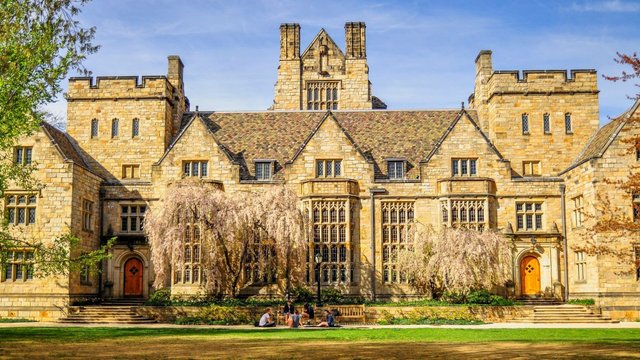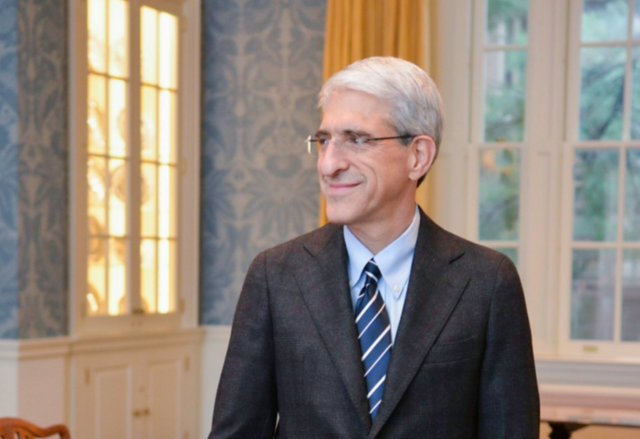The Nameless Privilege
Racial Discrimination at Ivy League Universities harms minorities. It’s time we face its causes.

I still remember the inauguration of Yale University’s president in 2013 as if it was yesterday: a nervous freshman, I was sitting on a hard wooden chair inside Woolsey Hall. Above my head, a massive and colorful Beaux Arts barrel vault domed up. In front of me, I recognized the new president ordering his notes. Behind the speaker towered the golden Newberry Organ crowned by Yale’s motto in Hebrew and in Latin letters.
Light and Truth. Recognizing Racial Privilege
Yale’s new president – Peter Salovey – stressed the importance of learning from everybody. Turning a page in his notes, Salovey conjured “the bond that connects us all”. It was precisely in this moment that I overheard a fellow Black student whispering: “how is this learning from everybody when every Ivy League president is white?”

My fellow student’s whisper made a point that I had never thought about in this way. Of course, I knew that Yale’s new president — as well as his predecessor Rick Levin — is Jewish. It just never occured to me what the overrepresentation of my people means to minorities. Even in 2021, seven out of eight Ivy League presidents are either Jews by descent or — as in the case of Christina Paxson — Jewish converts.
Jewish Privilege among Ivy League Students
I had already recognized that many Yale students were not just fellow students, but also fellow Jews. As I delved deeper into this fact, I found out that the same is true for other Ivy League universities. According to the Jewish Hillel organization, 15% out all Ivy League students in 2021 are Jewish.
Diversity is meaningless if we do not ensure that each community get their equal share in society. Elite institutions like Ivy League universities must be the first targets for creating a more vibrant and diverse society: first, elite institutions set the cultural and political tone of the US. It seems totally unacceptable to me that minority groups should not be represented equally in these centers of cultural power. Second, racial discrimination not only harms those who are excluded, but also those who are practicing exclusion. Only by becoming more diverse can a society unlock its true potential and thereby benefit those who were formerly privileged.
The Fake American Dream
Are you ready to take a deep dive with me into how minorities are suffering under racial discrimination? If so, let’s face the hard, fact-checked, truths on how Ivy League is crushing American minorities: below data show the share of Blacks, Hispanics, and Jews among Ivy League undergraduates in 2021. I retrieved the data from College Factual (Blacks and Hispanics) and from the Hillel Foundation (Jews).
- Brown: 6.8% Black / 11.1% Hispanic / 19% Jewish
- Columbia: 6.6% Black / 13.8% Hispanic / 17% Jewish
- Cornell: 6.7% Black / 13.9% Hispanic / 17% Jewish
- Dartmouth: 5.8% Black/ 10.6% Hispanic / 9% Jewish
- Harvard: 8.7% Black / 11.2% Hispanic / 10% Jewish
- Pennsylvania: Black 7.5% / 10% Hispanic / 17% Jewish
- Princeton: 7.9% Black / 10.6% Hispanic / 8% Jewish
- Yale: 7.6% Black / 14.1% Hispanic / 13% Jewish
What Jewish Privilege Means for Minorities
Let us look at the most blatant example. At Brown University, the share of Jewish undergraduates exceeds the share of Black and Hispanic undergraduates combined by more than one percentage point. In order to understand the full impact of this fact, we must look at the share of Blacks, Hispanics, and Jews of the total US population. According to the US census of 2020, Blacks and Hispanics made up 31.1% of the US population. Pew Research estimates that Jews make up 2.4% of the US population.
This means that Jewish undergraduates at Brown are almost 800% overrepresented among undergraduates in terms of their share of the US population. Blacks and Hispanics, however, are 43% less represented as warrants the demographic reality.
Toward Equity: Making Way for Diversity
In a circular from 2018, Yale’s president Peter Salovey stated his concern over an incident where a student of color was questioned by campus police if they had a right to be on the university’s premises. Salovey promised students that the university was “committed to continuing th ework of inclusion”. Having served as president since 2013, I find it hard to believe Salovey’s commitment. How can you take someone serious who presides over an institution where Jewish undergraduates are almost two times more present than Blacks?
I would like to invite Mr. Salovey to a thought experiment: if Jewish undergraduates at Brown University were represented equally to their 2.4% share of the US population, 16.6% new undergraduate positions could be given to other applicants. Lo and behold, that 16.6% would just be enough to bring disenfranchised Blacks and Hispanics a few percentage points above their fair share of the student body in terms of their population share.